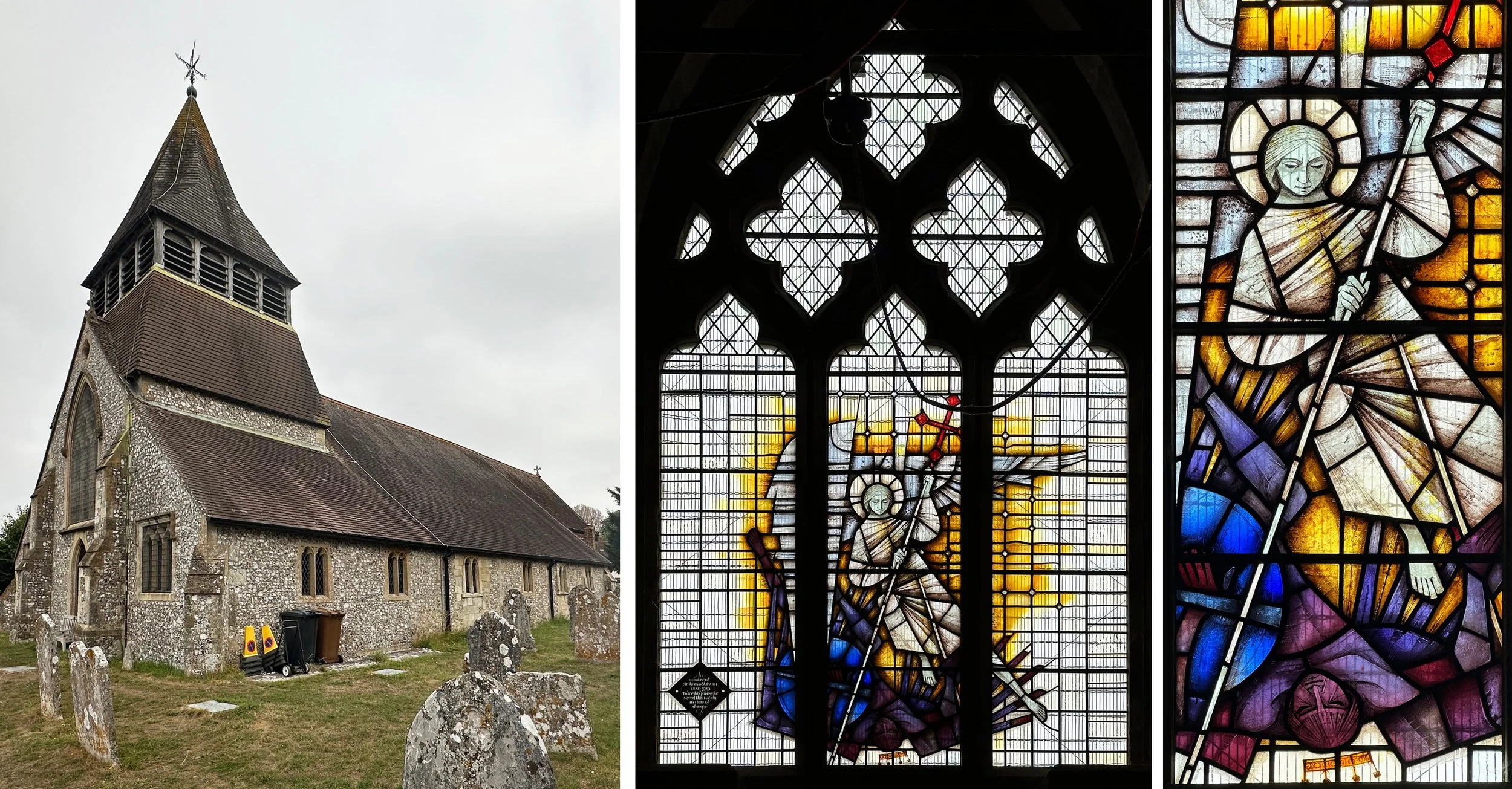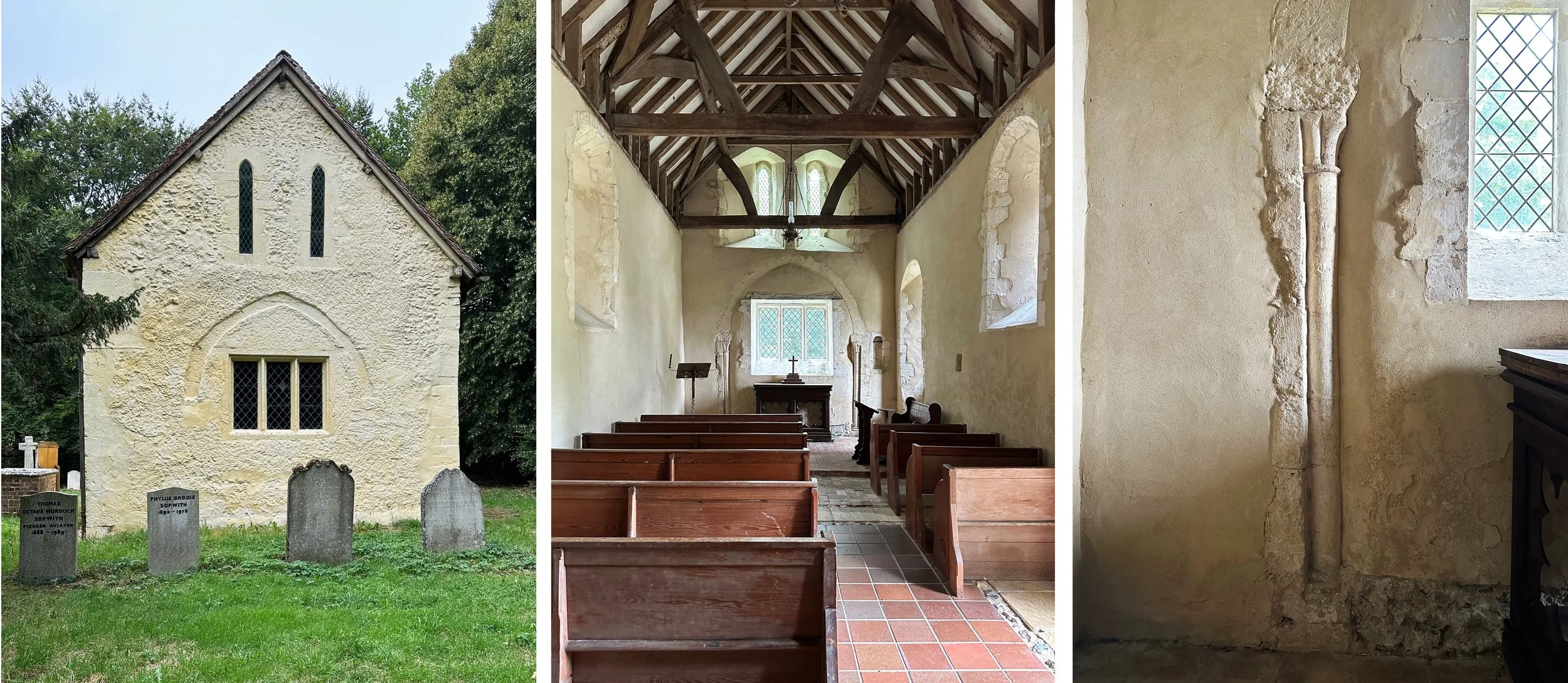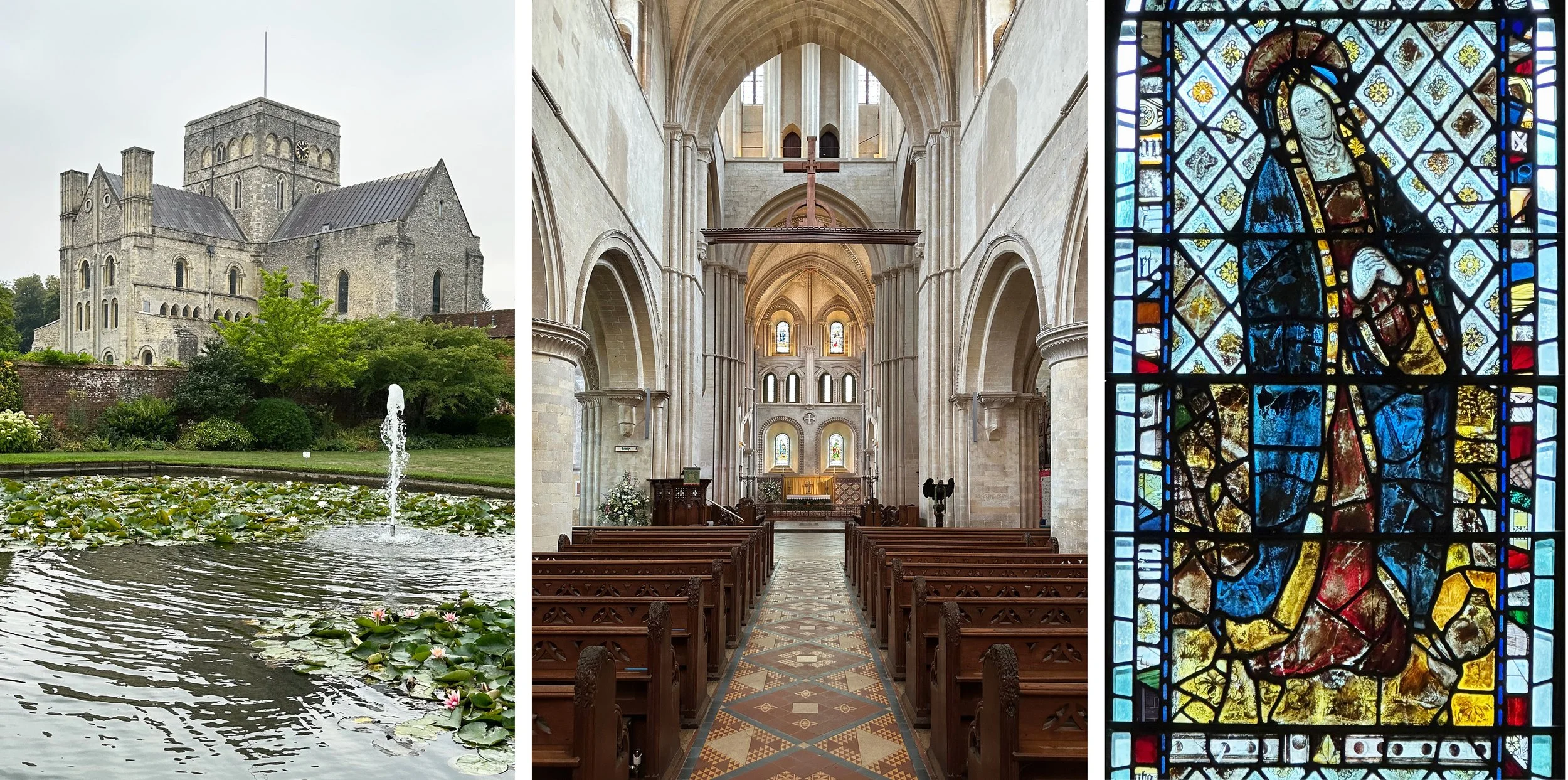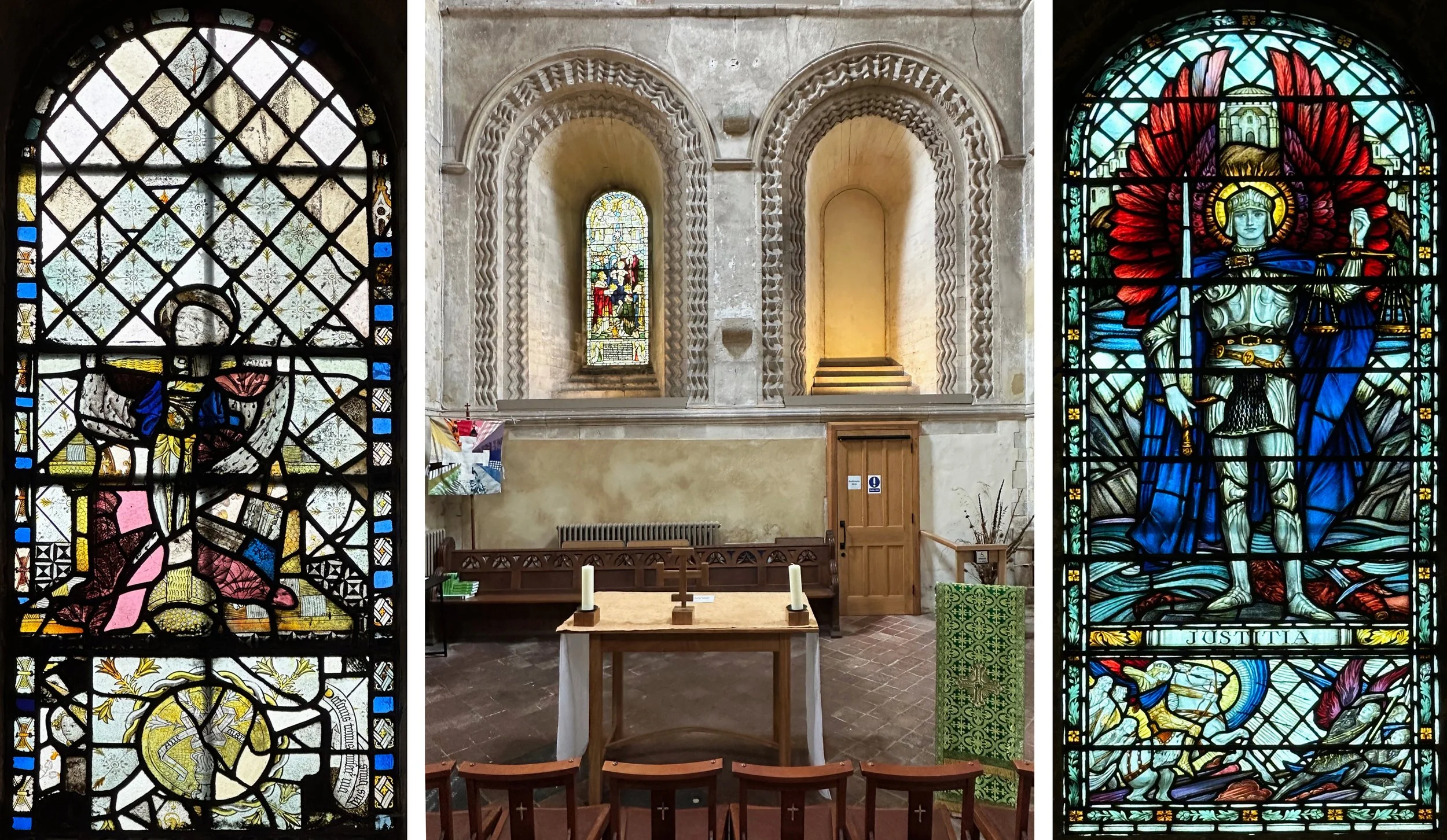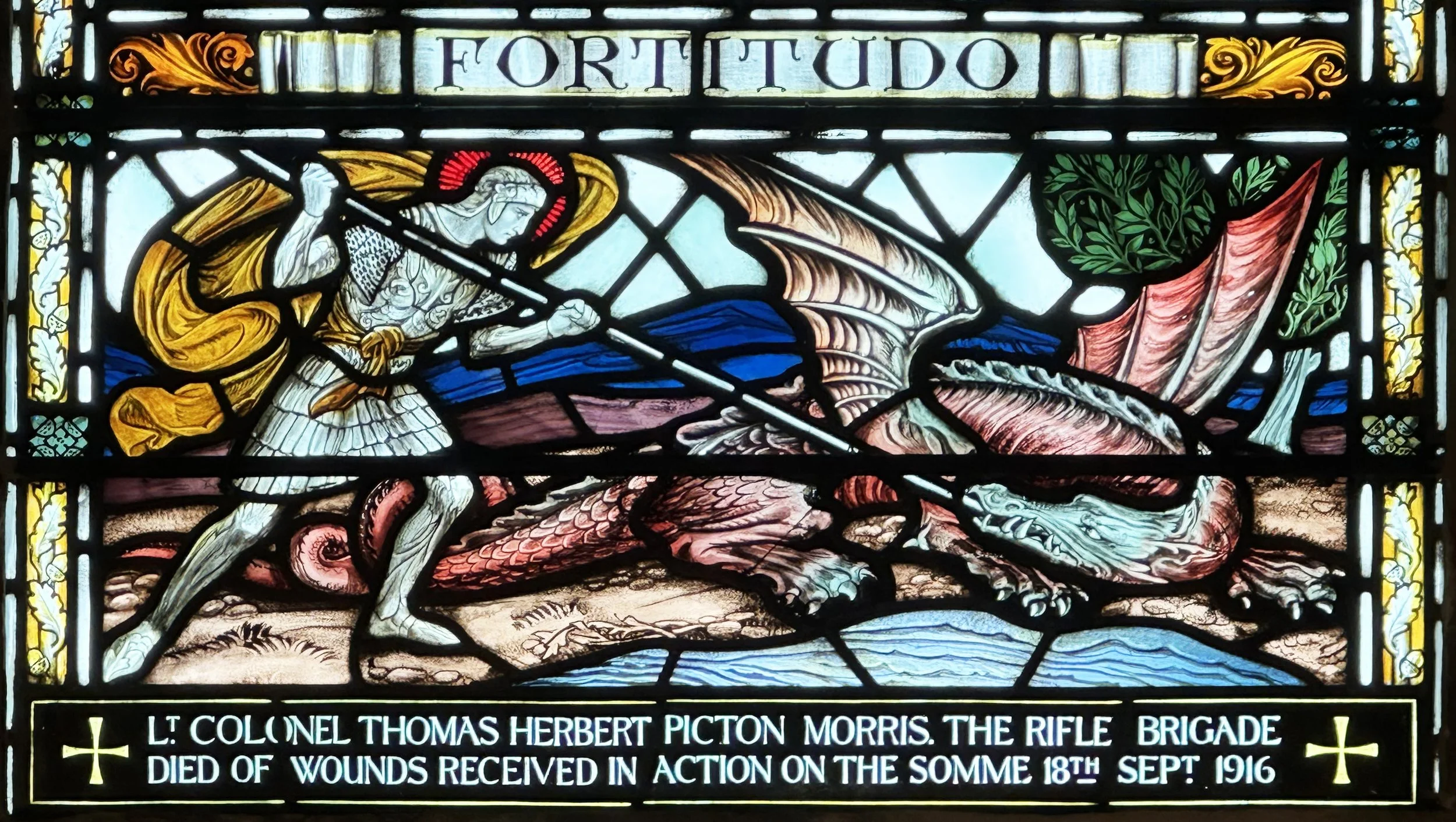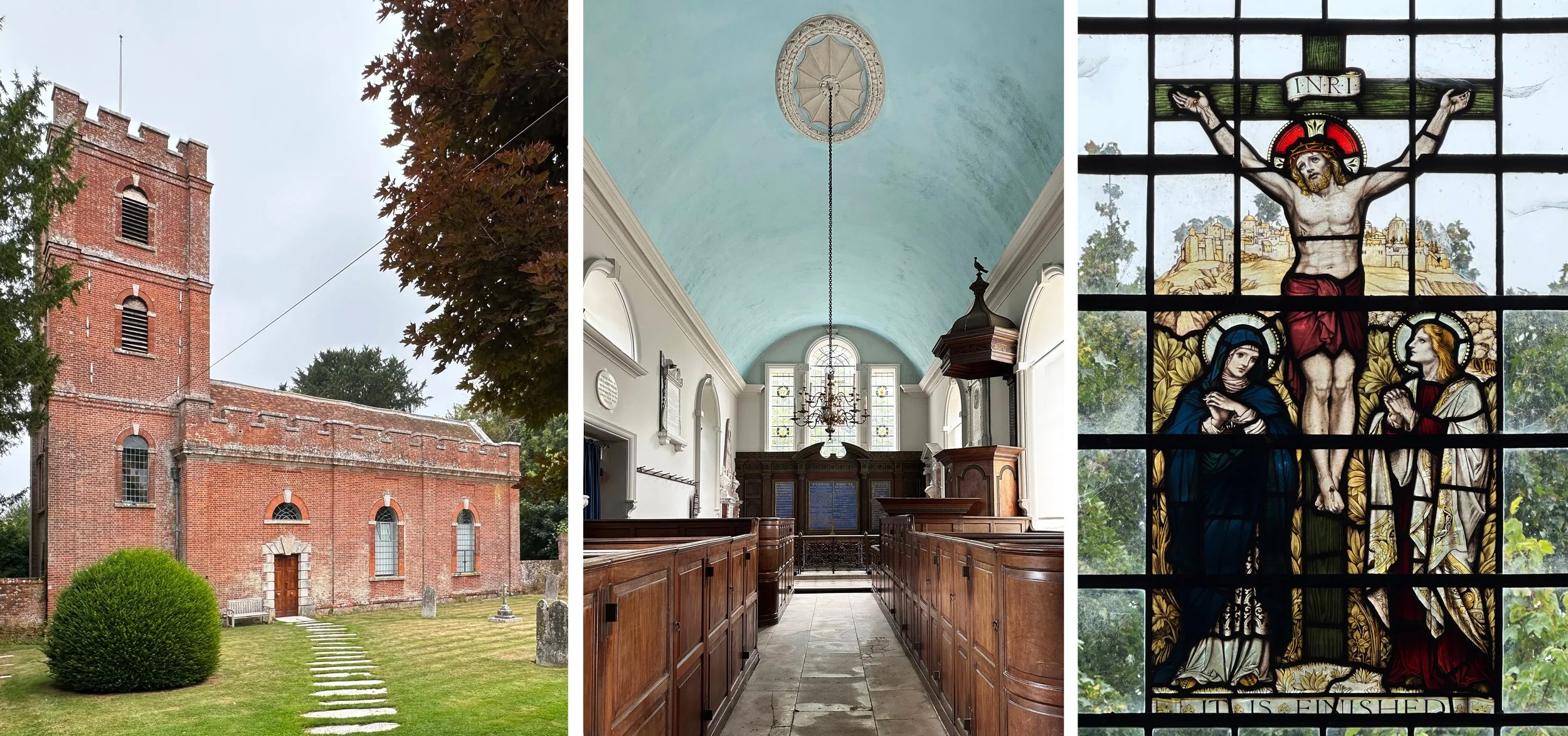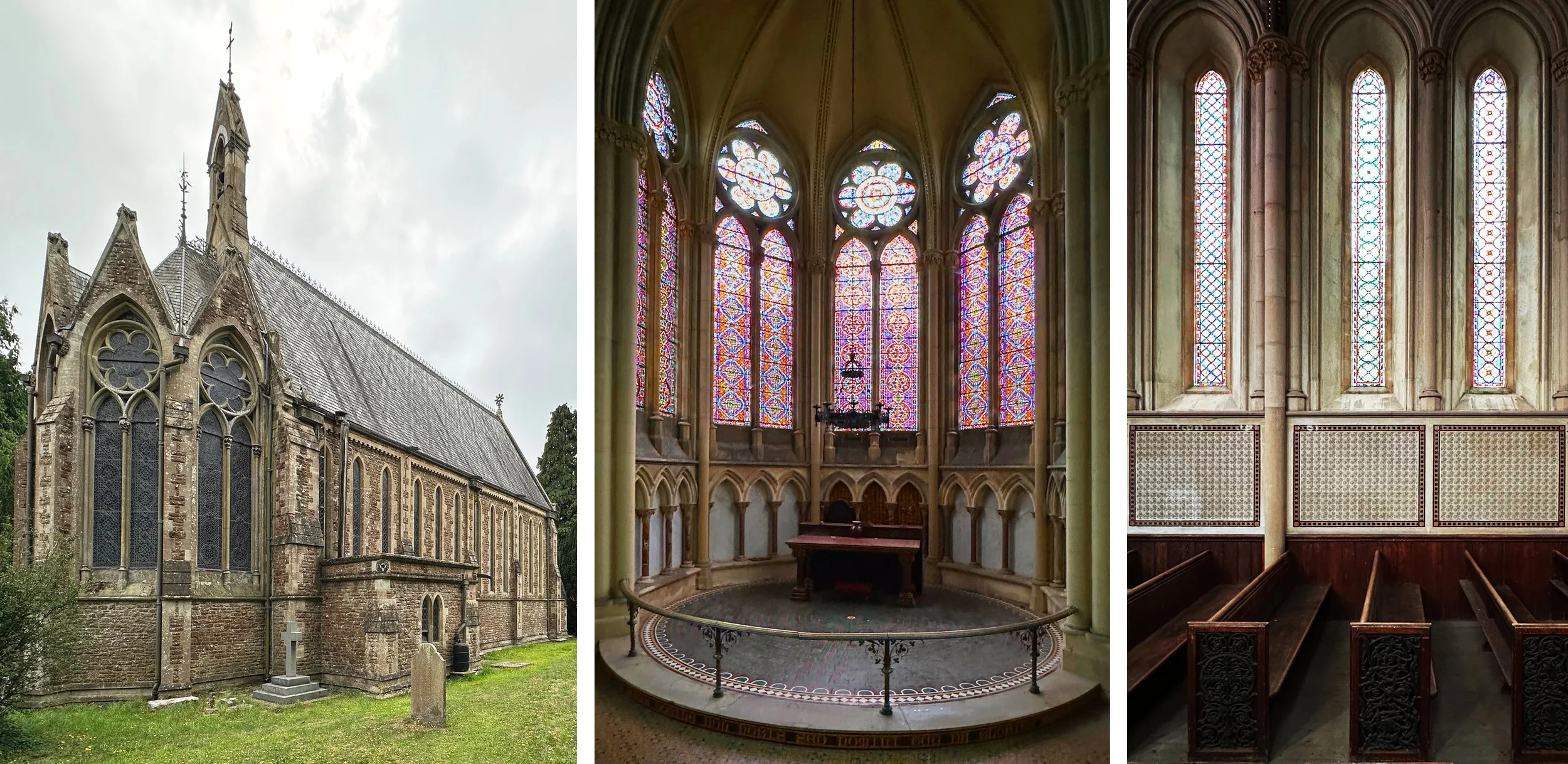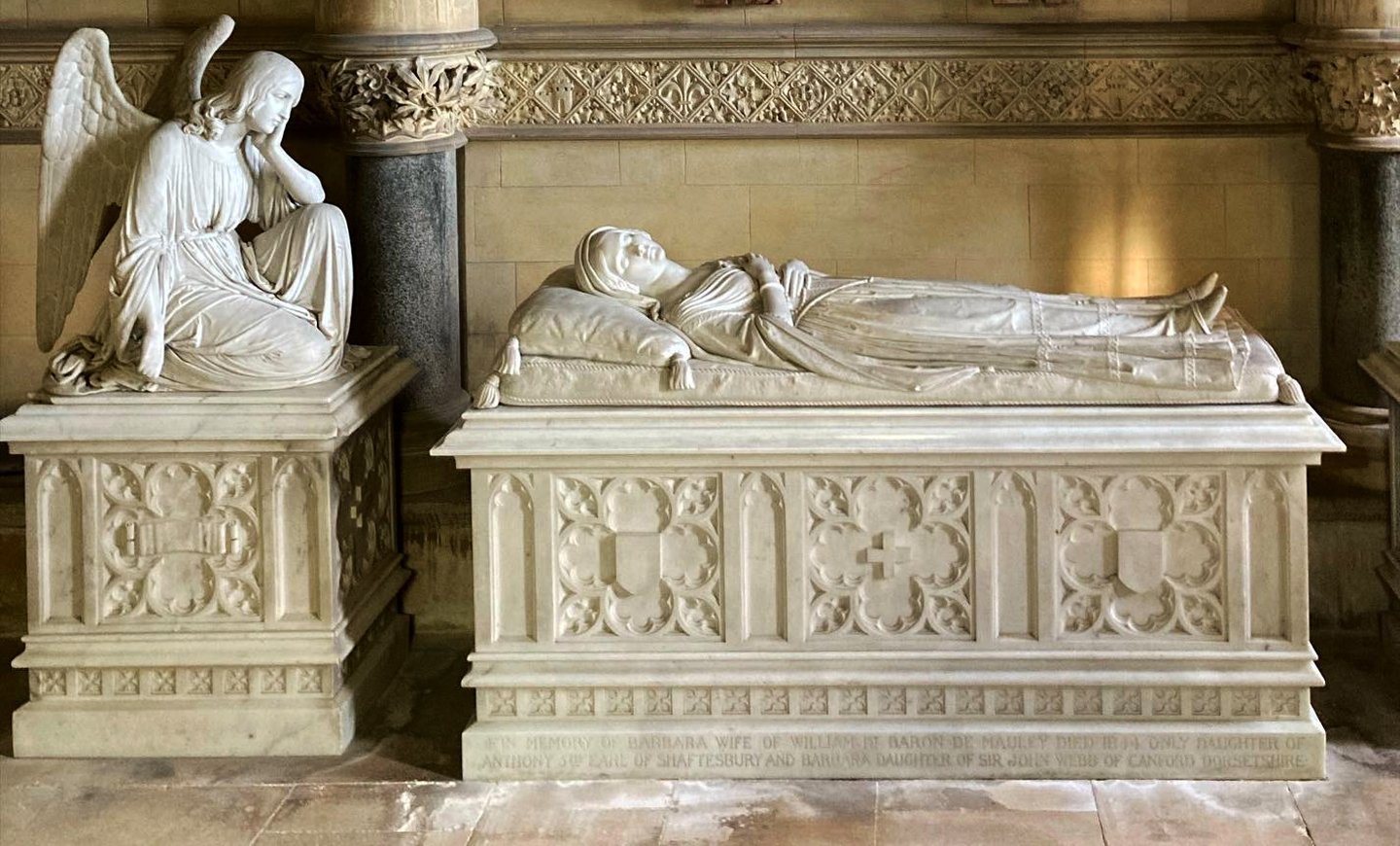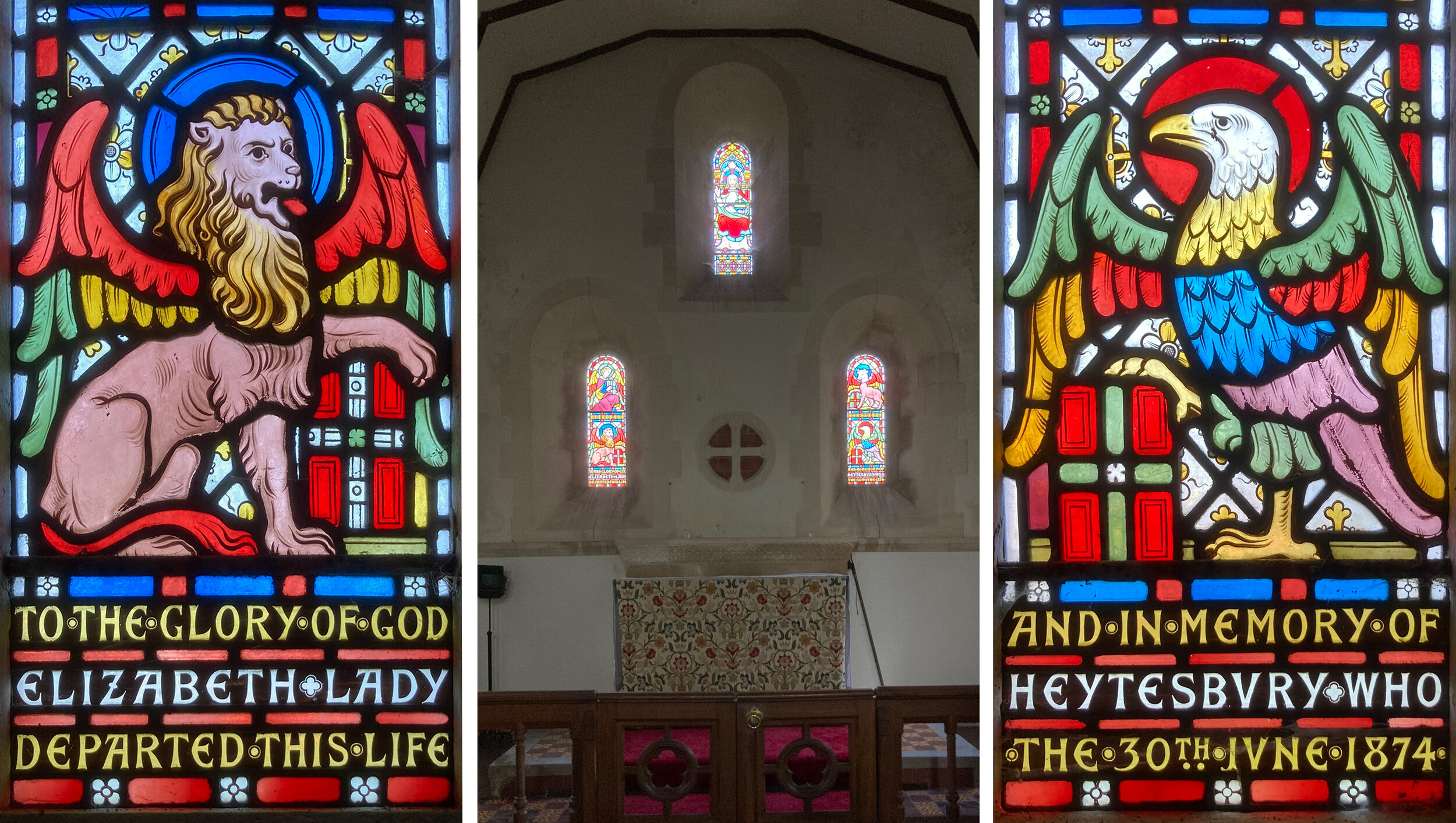Highlights from a church crawling trip that began on our side of Winchester (the north west) dipped into the south of the city, then continued along the River Itchen travelling north east.
St Peter & St Paul, King’s Somborne from the west end. St Michael window, John Hayward 1996.
The village of King’s Somborne has a late John Hayward window in the belfry at the west end of the church (above). In an interesting note framed and hung on the wall of the belfry Hayward writes
‘The subject matter is suggested by the life and career of Sir Thomas Sopwith, his great interest in flight and the crucial role played by his brain-child, the Hawker Hurricane in the 1939-45 war. The window is dominated by the white flying figure of Archangel Michael who overcomes the darker figure of Satan - an “upside down man” - who in the course of the struggle loses his crown…….The subject is set low in the window to take account of the height above ground level and its position above the porch. it is kept deliberately light in this dark church and much of the colour is derived from the use of silver stain to give a variety of yellows and golds against which the subject is set.’
You can see how well this positioning of the subject, set against a subtle leaded grid, works when you notice the height of the window in the church. The colour and the painted detail are, as always in his work, wonderful.
All Saints, Little Somborne
Next was Little Somborne with the graves of Thomas and his wife Phyllis Sopwith at the front of the church (above). The building has Saxon origins and a Norman chancel, where pillars seem to record what used to be there. It makes a pair with the church of St Mary at Ashley just two miles away (below) built to serve a Norman castle that no longer exists. There is just a fragment of a 13th century wall painting beside a window on the south wall. Both churches are looked after by The Churches Conservation Trust and are therefore plain inside and out and very tasteful.
St Mary, Ashley
St Cross, Winchester
Next into the southern suburbs of Winchester to the hospital and the church of St Cross, although it’s of a cathedral like scale, founded in the 1100s at the same time as the almshouses across the quadrangle. The architecture is Norman, with huge pillars and rounded arches surrounded by zigzagging. High up in the chancel are stained glass figures using old glass fragments (above centre and right), with another particularly good example in the east wall of the north transept (below left). The church was carefully and colourfully restored by Butterfield from 1859, with windows in the nave by Wailes, at a later date more stained glass windows were commissioned including a pair in the north chapel that I particularly like of Saints Michael and George (below right and lower panel).
St Cross, Winchester. Centre, north transept wall with zigzagging. Right, St Michael, James Powell & Sons 1917. Below, detail of St George window, James Powell & Sons 1917.
St Mary, Avington. East window detail, James Powell & Sons 1914
We followed the route of the River Itchen from the east of Winchester to a string of villages with interesting churches. The 18th century brick church at Avington (above) is lovely from the outside and the inside, with a blue ceiling, tall rounded mahogany box pews and a dove above the pulpit. The stained glass crucifixion detail in the east window (above right), again a window by Powells, has a view of a town in the background, solid and effective against the clear background.
St Mary, Itchen Stoke, chancel and south wall.
You may have noticed that although it is August and a heatwave is on, there is no sunshine. This may mean that I’ll have to go back to my favourite church of the day, St Mary’s at Itchen Stoke. It’s a tiny version inspired by Sainte Chapelle in Paris, which I remember as a contrast in lighting (and therefore a demonstration of how stained glass works) as the wall of windows on the south side were illuminated by the sun, while the wall of windows on the north side looked black because more light was reflected off the surface than was coming through them. Here at Itchen Stoke there was a dull pink light as all the windows glowed with stained glass patterns where red and blue glass predominate. The lower walls are decorated with subtle 3d tile panels, and the patterns continue on to the cast iron pew ends and the tiled floors. Best of all is the rose window above the entrance doors (below) that contains sections of 13th century glass around its edges. Built in 1866, It is one of only two churches designed by the engineer and architect Henry Conybeare and the only one still standing.
Rose window at west end of St Mary, Itchen Stoke.
